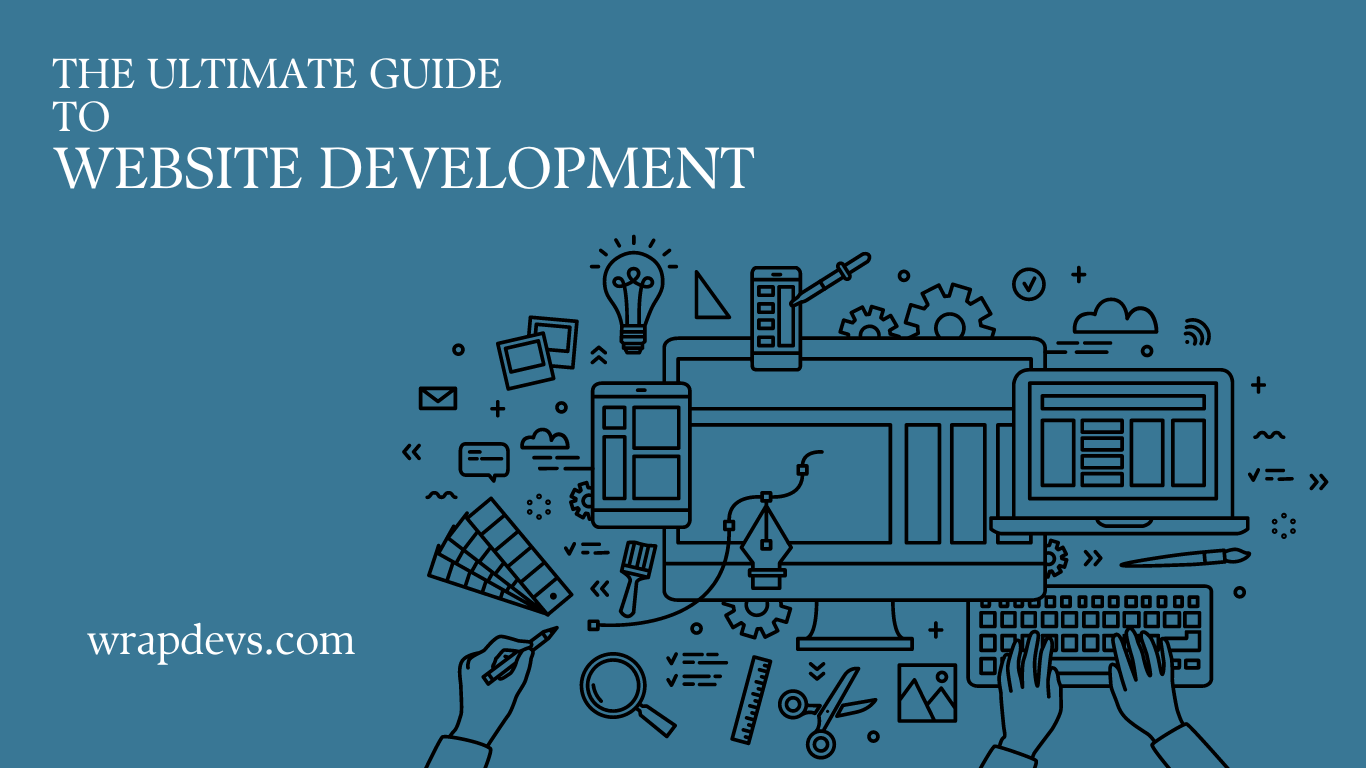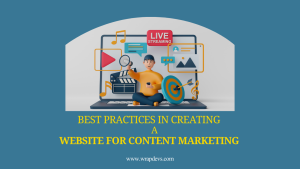
Introduction
In today’s digital era, a website is no longer just an online presence; it is an important helper in business development, brand management, and reaching out to your target group.
No matter if you are a small business owner, an entrepreneur, or a big corporation, success depends on how well you understand how website development works. The guide will take you through the necessary stages of website development and, therefore, help you make educated decisions to create a website that suits your needs.
1. Planning Your Website
Planning is the foremost part of the entire website development process. It is a very critical stage because this sets the way for the whole project. Key considerations include:
– Defining Your Goals: What do you want your website to achieve? Generating leads, selling products, or disseminating information-whatever the case, having clear goals will inform and direct your development process.
– Your Target Audience: Designing a website requires one to understand the audience. This involves demographic data, preferences, and behavior.
– Research
– Identifying Competitors: Research your competitor websites. You will extract every little insight about them. Note all those things that work for them and think of how you can do better.
Sitemap: A sitemap reflects the structure of your website, with the relationship between different pages; this allows for proper content organization and logical flow.
– Setting a Budget: It’s through the analysis of your budget that you are able to understand the scope of work that you’ll undertake. This comes in handy whether you outsource to a developer or use a website builder.
2. Selecting the Right Platform
Once you have it, the next step will be to choose the proper platform on which you’ll be building your website. Several are available, each with its pros and cons:
Content Management Systems: These are platforms like WordPress, Joomla, and Drupal, among others, providing flexibility and scalability. Ideal for websites that require frequent updating and information management.
Website builders like Wix, Squarespace, Shopify-all these are quite easy to use because you extend a website without coding. Such websites would be great for small businesses that need only simple websites.
Custom Development: If you want to have a lot of special features on your site, you probably should just go ahead and hire a web developer who could do custom development from scratch. Highly flexible but often more expensive and time-consuming.
3. Design and User Experience (UX)
The two most important features of any website are its design and usability. An effective website does not just look good-looking; instead, it gives a flawless experience to its users. Key considerations include:
– Responsive Design: The website design is responsive and adaptive. Since the usage of smartphones is increasing day by day, responsive design has become something imperative and essential; it is no longer optional.
Navigation: Clear navigation structure, intuitive. That means the user can get to what they need rather easily. Avoid clutter; stick with simplicity.
– Visual Hierarchy: Design elements like color, contrast, and typography direct the users’ eyes to important content. A well-implemented hierarchy takes a site much further in terms of user experience.
Loading Speed: Slow sites disappoint users and increase the bounce rate. Optimizing images, using caching, and minimizing code can be done to ensure faster loading times.
– Accessibility: Make sure your website is accessible to everyone, including people with disabilities. This also includes alt text for images, captions for videos, and keyboard-navigable actions across the site.
4. Creation of Content
Content is the backbone of your website, a way to get your message across, show off your products, and engage your audience. When thinking about the creation of content, consider:
Quality over Quantity: Concentrate on producing quality content that adds value to your audience. It could be in the form of blog posts, product descriptions, videos, and infographics.
SEO Optimization: SEO is the backbone of driving traffic to websites. Using appropriate keywords, meta tags optimization, and structuring your content will definitely enhance the search engines results for your website.
– Consistency: Keep your website in one tone, or another, at all times. This builds brand identity with your audience.
Calls to Action: These tell the users what to do and as such need to be clear and commanding, such as “Contact Us,” “Buy Now,” or “Subscribe.”
5. Development and Coding
Once the design and content are in place, it’s time to begin working on the website. This stage involves coding and integrating all the functionalities required. Important components that are included:
– Front-End Development: This includes coding the layout, design, and user interface of the website in HTML, CSS, and JavaScript. The focus of front-end development is on what users see and interact with.
The back-end involves the server, database, and application logic. It is where the data gets processed and is kept. The common back-end languages include PHP, Python, and Ruby.
– Database Integration: If your website will require storing and managing data, for instance, user accounts or product information, then a database integration will be applied. The popular ones that can be used include MySQL, PostgreSQL, and MongoDB.
– Testing: Testing needs to be done before launching. Testing for bugs, site performance with different devices and browsers, features of the site working accordingly must be performed.
6. SEO and Digital Marketing
Promotion and getting traffic to your website is the next big step after it is up and live. SEO and digital marketing strategies will prove super valuable in driving traffic to achieve these goals:
On-page SEO involves the optimization of individual pages by using appropriate keywords, quality content, proper meta tags, and their descriptions.
– Off-Page SEO: Backlinks from other, reputed sites will enhance your website’s authority and its rankings in search engines.
– Social Media Marketing: Advertise your website on social media to reach more people and communicate with your audience.
– Email Marketing: Build an email list and send regular newsletters to your audience so they can stay informed and engaged.
– Analytics and Tracking: Integrate tools like Google Analytics to monitor your website’s performance, track user behavior, and make informed decisions on the same.
7. Maintenance and Updates
It’s not all about development; it’s about maintenance and ongoing updates that keep your website secure, functional, and updated:
– Security Updates: Keep your website up-to-date by regularly updating software, plugins, and themes against known security vulnerabilities.
– Content Updates: Refreshing the content on your website through regular uploads or updates, such as blog posting, product updates, or customer testimonials. Performance Monitoring: Regular testing of your site for metrics such as speed, uptimes, and responsiveness will ensure seamless user experiences.
Backup and Recovery: Regularly backup your website data to prevent loss from a crash or some kind of cyberattack. It’s hugely important to have a recovery plan.
Conclusion
Web development is a very intricate process that starts with planning, goes through execution, and covers maintenance. Whether one builds a simple blog or even a complicated e-commerce platform, the understanding of key stages of development will help in the creation of a website that looks not only great but also drives results.
From defining your goals to choosing the right platform, designing a user-friendly interface, and optimizing for SEO-every step is crucial for the success of a website. The guide shall, therefore, henceforth seek to assist users with the foregoing and many other competencies that shall be needed along the way in building the right website suiting their needs and surpassing expectations.
FAQs
1. How long does the development of a website take?
The time for website development differs, with some taking a few weeks depending on the simplicity of the website, while others take several months when the website is more complex.
2. How much does it cost to develop a website?
Some of the costs included in making a website are a few hundred dollars each for design, functionality, and upwards to a few thousand dollars.
3. Can I build a website myself?
Of course, there are also DIY website builders like Wix and Squarespace. Such a website does not involve any coding whatsoever. Of course, when your needs become much more extensive, one would want to consult professionals.
4. How about SEO on my website?
SEO is crucial for driving organic traffic to your website. Without proper SEO, your website may not rank well in search engine results, limiting its visibility.
5. What should I be looking for in a website developer?
Look for experience, technical expertise, good communication, and examples of work. It is equally important to select a person who can understand your goals and vision.



